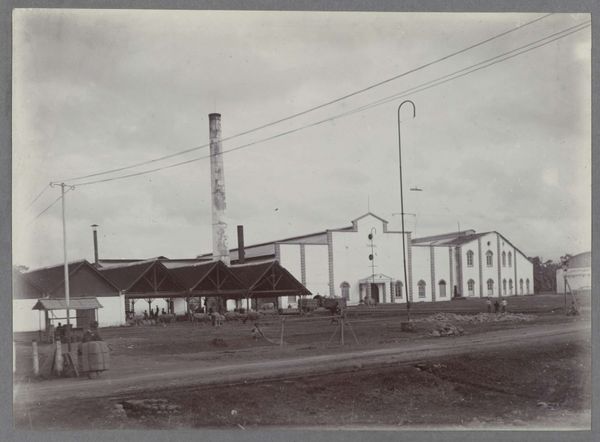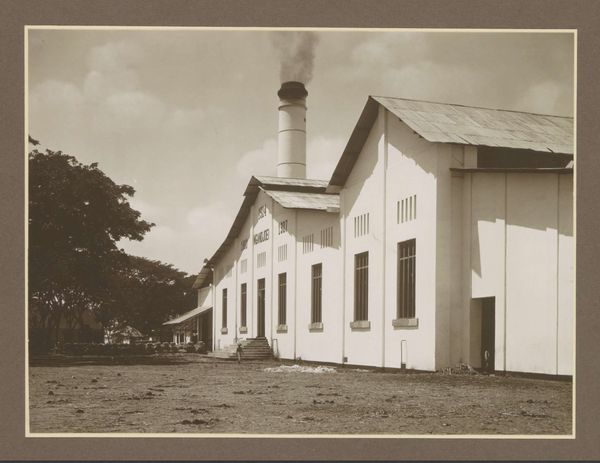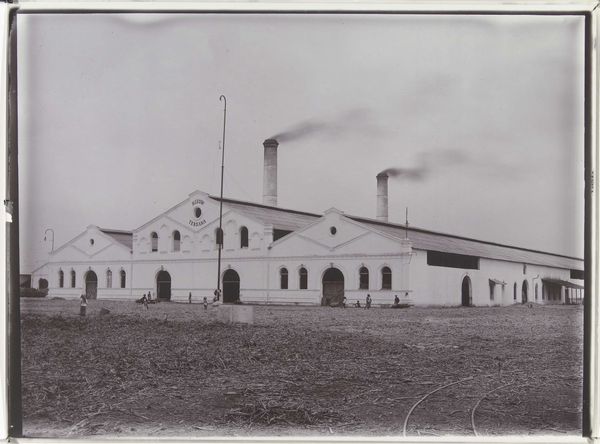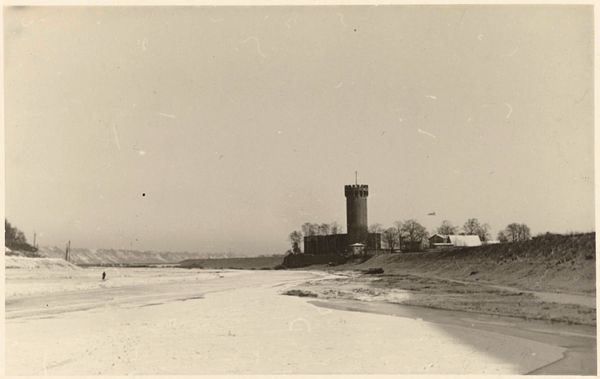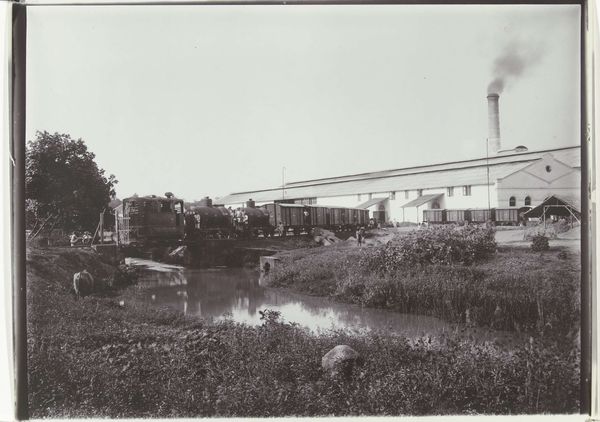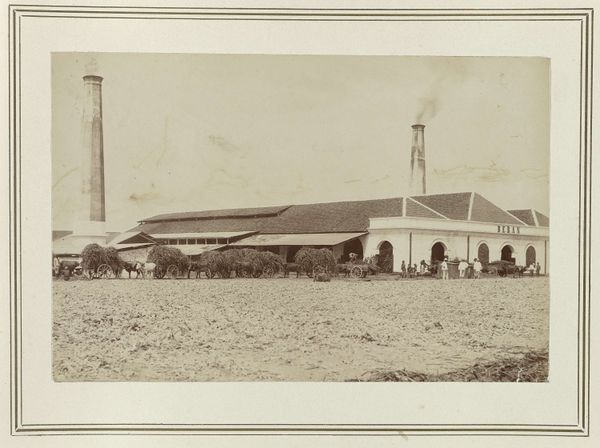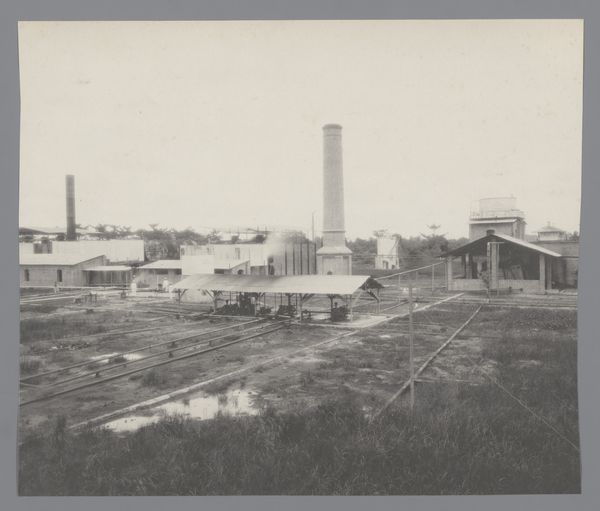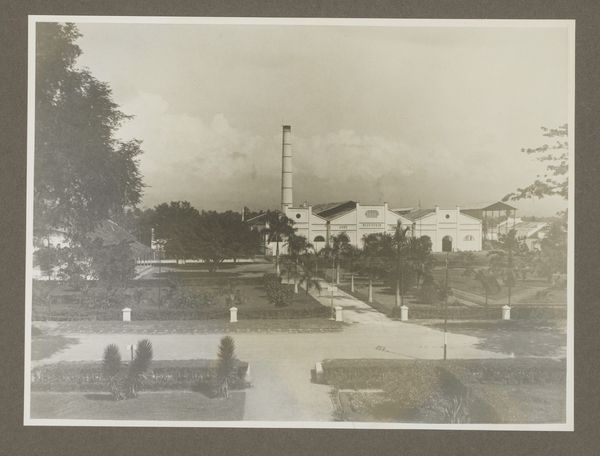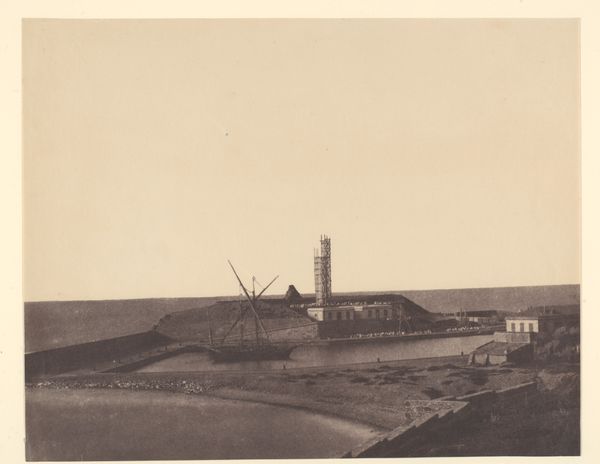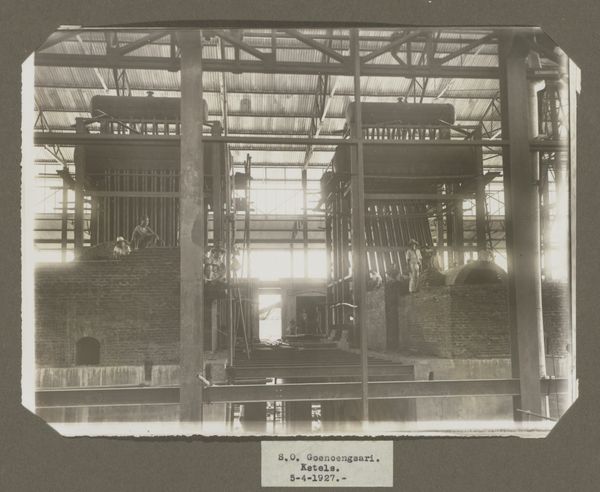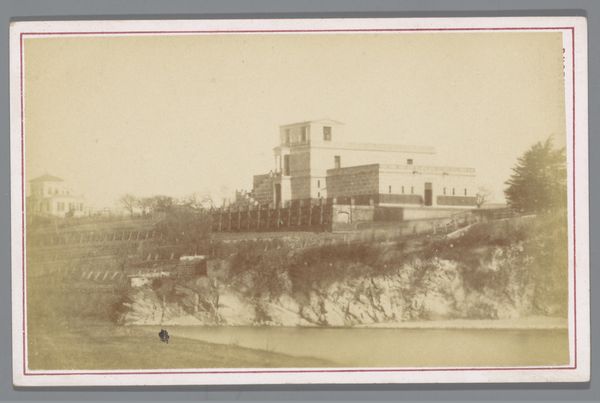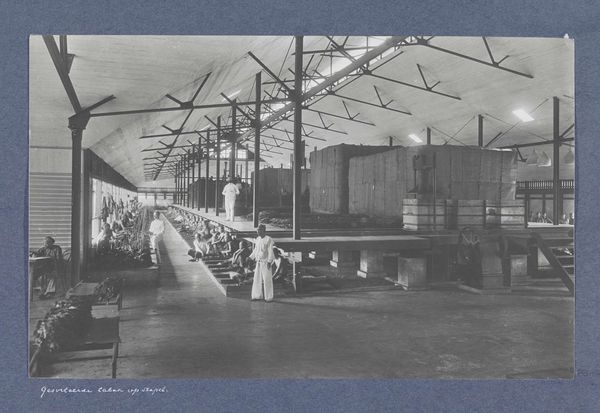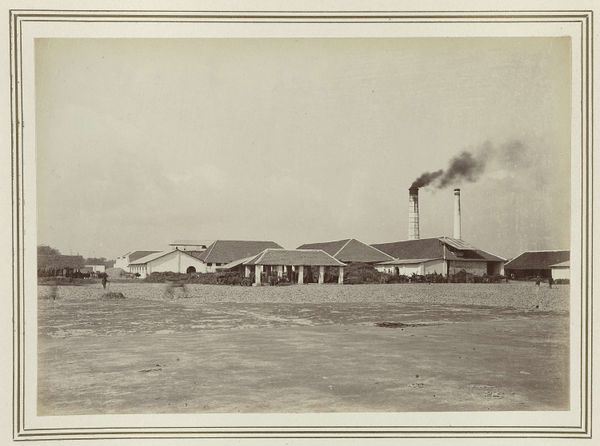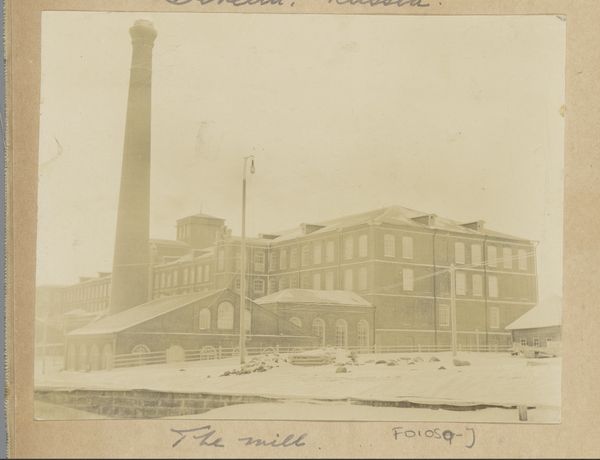
Emplacement met treinwagons en hal met schoorsteen van suikerfabriek Goedo te Djombang op Java c. 1925 - 1930
0:00
0:00
print, photography
# print
#
landscape
#
archive photography
#
photography
#
historical photography
#
plant
#
realism
Dimensions: height 297 mm, width 450 mm
Copyright: Rijks Museum: Open Domain
Editor: Here we have an early photograph from between 1925 and 1930, titled "Emplacement met treinwagons en hal met schoorsteen van suikerfabriek Goedo te Djombang op Java," attributed to Isken. It shows a sugar factory in Java, with train wagons laden with what looks like sugar cane. There’s a somber tone. How do you interpret this work beyond its immediate depiction? Curator: The photograph is more than just a depiction of a sugar factory; it's a document that unveils the complex colonial history and its lasting impact on Java. Think about the sugar industry itself: its entanglement with colonial economics, forced labor, and the exploitation of land. Editor: So, the factory isn't just a factory? Curator: Exactly. The factory, the train wagons, the very landscape… They become symbols of a system that extracted wealth while displacing indigenous populations and disrupting traditional agricultural practices. The almost sterile, industrial landscape contrasts sharply with the lush, natural environment one might expect. Doesn't it speak volumes about the imposition of Western models of production onto the local environment? Editor: Yes, it really does. It's a stark contrast now that you mention it. Did the artist have a particular perspective? Curator: Isken, while documenting the factory, also captured a visual representation of colonial power dynamics. As viewers, we're prompted to consider the unseen labor and the social costs embedded within this industrial scene. Who benefitted, and who suffered? Editor: This makes me think about the current debates around fair trade and the legacy of colonialism. Thanks for broadening my perspective. Curator: Indeed, art serves as a potent reminder. Let us then continue these dialogues.
Comments
No comments
Be the first to comment and join the conversation on the ultimate creative platform.
